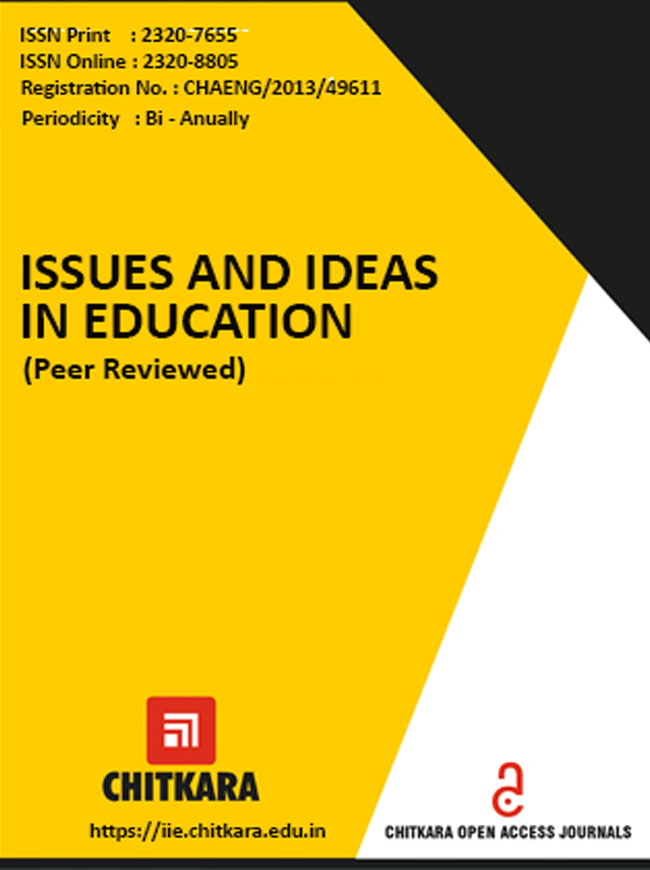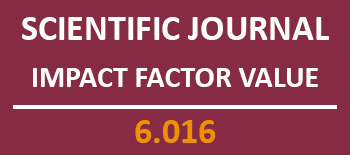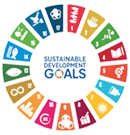Background: Effective skill development remains an important vehicle for national prosperity. Aswhat appeared to work with their predecessor generation (Gen X) does not have the same results with Millennials many educators today are experimenting with pedagogies to effectively train Millennials. Globally, it is becoming evident that the Millennials in higher education learn very differently than their predecessors.
Purpose: Our study provides comparisons on three learning parameters of learning affectivity, goal orientation and competition between Gen X & Millennials..
Methods: To study whether the learning attributes are similar or they differ across the two generations we compared the means of the three attributes under consideration. Results: We find Millennials to be different from Gen X across the three studied parameters suggesting that teaching pedagogies require a rethink for Millennials.
Conclusions: These results could be useful in designing appropriate teaching pedagogies that are likely to improve Millennials’ learning.
Background: Learning losses does not mean forgetting only curricular learning but slipping back of fundamental learning abilities that learner would have acquired during schooling. School closures in India have severely disrupted learning processes of children resulting in learning losses and social gaps in academic outcomes. Though school closure is a global phenomenon, its adverse effects on learning outcomes are unevenly distributed in the society.
Purpose: The paper aims to trace the phenomenon of learning losses resulting from a prolonged school closures during COVID 19 pandemic at the national level since march 2020.The study further is directed to trace accessibilities and uses of digital resources in India.
Method: The study used secondary sources of data mainly of Bihar to ascertain the trend of learning losses. The data were regenerated to measure the emerging trend. Results: Learning loss was unevenly distributed in the society. Those who were digitally equipped had compensated their learning losses during school closures. The Bihar had mere 5 per cent computer and 15 internet facilities. The rural households had only 3 per cent computer and 13 per cent internet facilities. Primary grade children especially of disadvantaged groups in Bihar suffered more because they have very limited home learning resources. Learning crisis was more prominent at elementary school level where both the home resources and digital tools were inadequate. They spent hours in surfing social media for private purposes. The phenomenon of cyber loafing was widely seen among young students, showing a serious problem of internet abuse by secondary school students.
Conclusion: Despite constraints Bihar managed to continue school learning programme during COVID 19. It had a largest force of digitally-equipped teachers (about 1.25 lakh) known as Potential Learning Community (PLC) who were ready to deliver e-contents to beneficiaries. Teachers established connectivity with parents and learners who had no android mobile. They started running Schools on Mobile (SOM) classes. The paper discusses learning recovery plan such as engaging community, reallocating resources for schools, etc.
Background: Self-efficacy in the use of ICT refers to a person’s belief in their ability to succeed in the use of ICT in the teaching, learning and assessment process as well as research purposes.
Purpose: The incorporation of ICT into teaching, learning and as-sessment, and for research purposes is a powerful tool that pro-motes the teaching-learning environment in several ways. This study was aimed at investigating Physics Tutors’ self-efficacy (PTSE) level towards ICT integration into teaching, learning, as-sessment and research in the various Colleges of Education (CoE) in Ghana.
Methods: A Four-point Likert Scale Questionnaire was used to ob-tain quantitative data from 16 physics tutors sampled from the 16 Science and Mathematics Colleges of Education in Ghana. The data obtained was analyzed based on a number of factors such as historical inclination towards the use of ICT among other things.
Results: The findings from the study however reveled that most physics tutors accept and believe that the use of ICT in teaching physics significantly improves on teaching and learning. However, many of the Physics Tutors believe that there isn’t enough support in terms of logistics and training from the various stakeholders such as institutional heads, supervisors and even colleagues in the usage of ICT in teaching and learning physics Conclusions: It is concluded that the overall PTSE towards ICT integration in the CoE is above average (2.6 on a scale of 4).
Background: The twenty-first-century learners can be termed as digital natives and therefore, any discussion on the pedagogies and curriculum must concentrate on integrating digital literacy skills and the teaching and learning materials must focus on the development of the technological intelligence of the learners. The principal appre-hension for all the educationists and curriculum planners is how to transform and modify higher education for preparing the learners of this century to more effectively cope with the challenges of today’s labor market.
Purpose: The paper aims to answer two key questions facing higher educational educators are those of: (i) what is the present status of higher education in preparing the graduates with the necessary skills and competencies for 21st-century skills, and (ii) how can the present education system integrate the digital and technological intelligence in the curriculum?
Methods: Exploration of the current Indian higher education cur-riculum and critically analyzing the results of various studies con-ducted in a similar area and by analyzing newspapers, educational policies, public survey results, and literature regarding the trends and developments in the higher education academia.
Results: This disposition visualized the possible challenges and suggests practical measures to solve the problems and demand for a new paradigm where there is symbiotic integration of digital literacy skills and technological intelligence is highlighted. Conclusion: There is a great need for updating and transforming the curriculum and pedagogic approaches in tune with the learning styles and demands of the learners.
Background: Content and Language Integrated Learning (CLIL) is a European innovative interdisciplinary educational convergence that intends to promote multilingual competence among students through the learning of the subjects in a second/foreign language. This approach is considered one of the significant developments in the field of education that emerged in the last decade of the twentieth century garnering massive acceptance and implementation in schools and universities in Europe and other parts of Asia.
Purpose: Although one can see a growing number of research studies and classroom experiments on CLIL in diverse educational contexts, in other countries such as India, education exhibits lacuna in terms of knowledge, research and practice. Therefore, a research study was designed with the objective of exploring and understanding the nature and method of CLIL practices prevalent in bilingual primary and secondary school classrooms in Castilla La Mancha, Spain. Spain was chosen because it is one of the pioneering countries that steered an exhaustive variety of research and experiments in CLIL practices in its diverse educational contexts.
Methods: Adopting qualitative research method Participant Classroom Observations, twenty classes of two bilingual schools—fifteen classes of Natural Science and Social Science in primary school and five classes of Music at Secondary School that used CLIL approach were observed and findings recorded using observation template.
Results: The findings provided a myriad view of the bilingual experiences in the classrooms, diversity and range of pedagogical practices used, student teacher interaction dynamics present, positive learning environment provided for the students in the classes to mention a few.
Conclusion: The study concludes with the understanding of the ‘added value’ and the numerous benefits the approach provides for the students. As a fresh and innovative approach, CLIL promotes holistic and meaningful learning catering to the needs of twenty first century education systems.
Background: The higher education institutions will go a major innovation, reform, and change to achieve the goal of achieving quality, accreditation, and autonomy.
Purpose: To evolve a holistic framework and strategies for achieving, quality, accreditation, and autonomy.
Methods: The study is an exploratory qualitative study. The unstructured questionnaire is used for conducting the research which is responded to by 754 respondents working in higher and technical education institutions in the country.
Result: The framework suggested in this study is having four rings. The innermost ring is a governing ring that is responsible for the professional governance of the institute with the help of the governing teams. The second ring is the capacity-building ring which is responsible for capacity building and capacity development and creating an innovative climate and culture. The third ring is a functional ring that is responsible for implementing the innovations, reforms, and change in the institute that are aligned to the provisions of the national education policy 2020. The fourth ring is the product and service ring and also the outermost ring which is responsible for the interface between the institution and the external environment. Conclusion: The reform-oriented institutions are provided strengths by these four rings to obtain accreditation and autonomy and sustain it. The strategies for each ring are suggested in the context of the National Education Policy 2020. It is suggested to implement the framework and strategies to effectively, efficiently, and productively implement the innovations in the institute.
The study was conducted to assess social-emotional competencies among Indian and Ethiopian undergraduates. A total of 400 (200 each) participants, with an equal number of 100 male and female were selected through a multi-stage sampling procedure from Punjabi University (India), and Wollega University and Ambo University (Ethiopia). The participants were tested with the Social Skills Inventory (SSI: Riggio & Carney, 2003), which consists of two super-dimensions, i.e. emotional competence and social competence each having three sub-dimensions: emotional expressivity, emotional sensitivity, emotional control, and social expressivity, social sensitivity and social control respectively. Obtained
data were subjected to t-statistics. Significant mean differences in social-emotional competence were observed between the Indian and Ethiopian young adults;male and female samples of the two countries. The Indian sample was greater in Social-emotional competence than the Ethiopian sample. Similarly, male and female participants from the Indian sample were greater in social-emotional skills than that of the Ethiopian sample, except for emotional sensitivity with the female participants, where the mean difference was non-significant. Further explorations are recommended to consolidate or refute the result of the present study.
A mentoring approach towards excellence is proposed in this paper. This approach should be followed to develop educational leaders and faculty members to prepare HEIs to build capacity and capability to implement the provisions of the national education policy (NEP) 2020. The approach includes designing the mentoring programme at the institute level, selection and orientation of mentors, selection and orientation of mentees, mentoring process, mentees and mentors’ outcomes, and ultimate outcomes of the mentoring programme-academic, research, and excellence. The authors have noted recommendations to make the mentoring programme successful.
The development of any nation depends on its citizens. Every citizen has their contribution to the development of a nation even the disabled person. They also have an equal rights to get a higher education. Higher education increases the chance of employability, thus, affirming dignified life for persons with disabilities. As per Census 2011, in India, out of the 121 Cr population, about 2.68 Cr persons are ‘disabled’ which is 2.21% of the total population. But it has been seen that very few of these people reach higher education. According to census 2011, 61% of the disabled children aged 5-19 years are attending an educational institution, 12% attended educational institutions earlier while 27% never attended educational institutions. That makes the author think and ask about how our higher education institutions are accessible for disabled students. How inclusive are our higher education institutions? In the light of the above-mentioned problems the present paper has discussed the education of children with special needs in higher education specifically with respect to visual impairment, hearing impairement, locomotor disability, and speech-related impairment. The discussion starts with what all kind of legal provisions and reservations which are there for them in higher education and how many are utilized and used by them. What all things are there in the new education policy for them specifically in higher education, whether their needs have been realized in detail or it has been just touched superficially and at the end, few suggestions related to all these issues have been discussed.
The study attempted to answer two basic questions of classroom teaching: a. what were the most common teaching practices at the elementary school level? And b. did teachers foster curiosity in children during teaching? Classroom proceedings enfolded various teaching activities that might lead to a knowledge gap in students. 137 primary and middle schools (altogether 411 classes) were randomly selected to measure a pattern of questioning and answering during classroom teaching. Findings revealed that a large number of teachers adopted lecturing followed by writing on the board, dictating, and ignored some important teaching techniques such as explaining, demonstrating, and experimentation; though they were familiar with all these. Hardly any student asked questions to the teachers. Teachers missed to generate a gap of knowledge in them, showing hardly any use of curiosity-led instructional teaching design. Throwing any question to class or a group of students was an unplanned teaching behaviour. It was a limitation of an in-built education system that prioritised rote learning, exam scores, and grades that measured more static knowledge rather than understanding knowledge. The findings discussed limitations of the in-built education system and mindset of teachers that discouraged epistemic curiosity in children.




